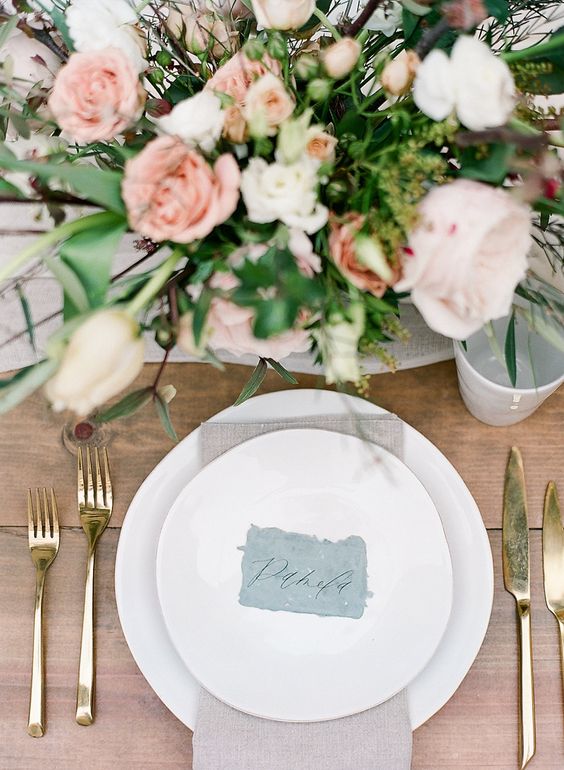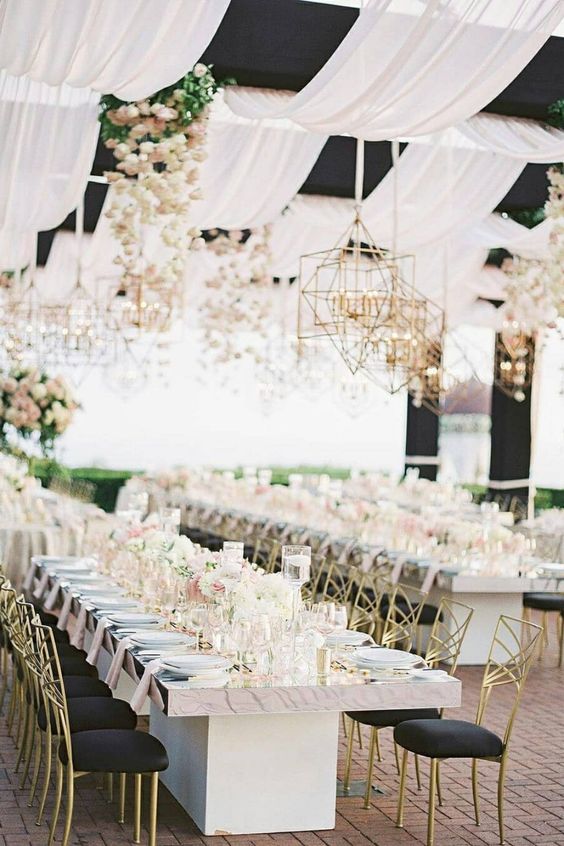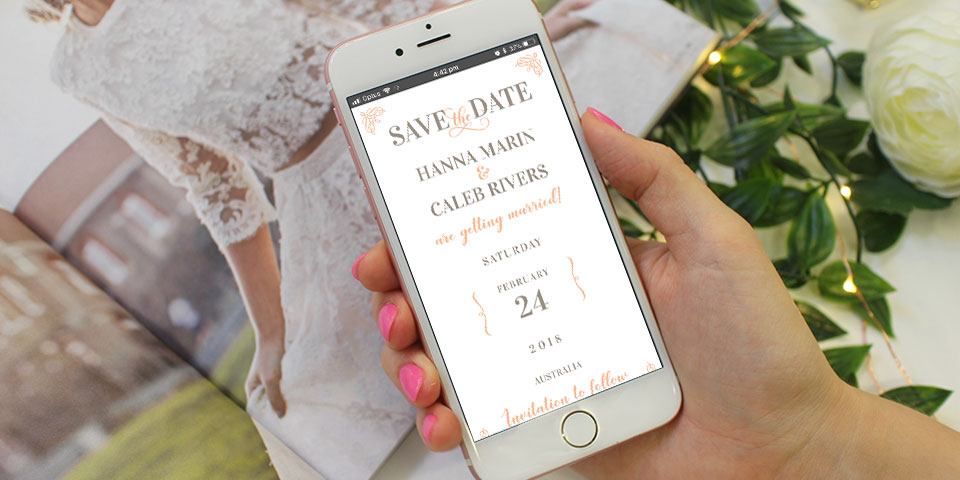There’s no doubt creating your wedding seating chart can be an absolute minefield. Not only do you need to figure out the right floor plan for your event, you often need to deal with a bunch of emotional baggage in the process!
For example: Where should you seat divorced parents? What about kids and single guests? And is a bridal table really necessary?
We completely understand seating plans can be a serious source of stress, so we’re here to help. Read on for our guide to wedding seat chart etiquette, including some of the major faux pas you should be aware of.

Figuring Out Your Floor Plan
Before we get into the nitty-gritty of seating chart politics, let’s start with the basics. The first step will be coming up with a practical floor plan for your reception and figuring out how many guests you can seat per table.
When it comes to mapping out your table layouts, you’ll need to consider the size and shape of your venue, your menu style, and the overall atmosphere you want to create.
Some of the most popular options include:
- Long rows. Long, communal tables are well suited for rectangular spaces or outdoor venues. This style of floor plan often creates a relaxed atmosphere and makes it easy to hang flowers or lighting installations above the tables. Communal tables are also ideal if you’re planning a feasting-style menu.
- Individual tables. This could be rectangular tables, round tables, or even a combination of the two! Individual tables can create a more formal atmosphere and a sense of intimacy at each table.
- U-shaped. This style of floor plan is unique and eye-catching, but may not be a practical option for some venues. U-shaped layouts can be tricky to pull off for large weddings, so they’re best suited for smaller guest lists.

Assigned Seats: Yay or Nay?
Once your floor plan has been decided, you can now figure out what kind of seating plan will best suit your event.
Your options include:
- Assigned seating. The most traditional option, where you assign each guest to an individual seat. To do this, you can display a seating chart at the entrance to the reception, and use place cards at each table setting with the name of each guest.
- Assigned tables. Instead of being assigned individual seats, guests are assigned to a particular table and can choose their own seat once they arrive. Again, you’ll need to display this on a seating chart, though place cards won’t be required.
- Informal seating. Without any specific seating plan, your guests are free to find and choose their own seat wherever they like.
So, do you really need to create a seating chart for your wedding reception? While informal seating may seem like the easy option, it can actually cause more stress, awkwardness, and chaos on the day – particularly if you have a large guest list or family members who don’t get along!
While creating a seating plan may require more time and effort, it will ensure the transition from cocktail hour to reception is smooth and seamless. Let’s be honest – the last thing you want to be dealing with on your wedding day is any added stress.

Navigating The Bridal Table
One of the most important decisions when creating your seating chart is figuring out where you and your wedding party will sit. Again, you’ll need to consider the size of your venue along with the experience you want to have at your reception.
Do you want to go traditional with a separate bridal table at the head of your floor plan, facing your guests? Would you prefer to scrap the bridal table altogether and simply sit amongst your friends and family for an informal feel? Or, do you want to set-up a “sweetheart table” for you and your new husband or wife to soak up the moment together?
There’s no right or wrong decision here – simply choose the option that feels most comfortable for you!
Where To Seat Your Parents
Etiquette states that the closer people are seated to the newlyweds, the more they are “honoured”. So, when it comes to assigning seats for your parents, treat them as VIP guests!
If you’re planning a head bridal table, try to seat your parents at the next closest table. It’s common to have a “family” table where both sets of parents (along with siblings and grandparents) sit together. Alternatively, you can have each set of parents host their own table with their family and friends.

Where to Seat Divorced Parents
Seating chart politics is a very real thing, and dealing with divorced parents is usually the main culprit!
The right decision here will really depend on the relationship between both parties. If your parents get along amicably, you can absolutely seat them at the same table. Be sure to sit them next to their new partners if they are remarried or in a relationship.
If the situation is not so amicable, you may feel more comfortable splitting them up. You can do this by sitting them at two tables equally close to the head table – or, if you’re using long rows, sitting them at opposite ends.
The same rule applies to any other friends or family members that may have tense relationships. While you’d hope that everyone is on their best behaviour for your special day, it’s best to seat them away from each other to avoid any unwanted drama. Read our tips on how to navigate family drama while planning a wedding here.
How to Seat Single Guests
You’ll likely have some single guests joining you on the day, so should you play cupid and sit them together on a “singles” table?
While it might seem like the practical option, lumping all of your single guests together is actually considered a major etiquette faux pas (and can be super awkward for those involved!).
Instead, disperse your single guests throughout your seating chart according to their friendships and connections with other guests. If they’re attending the wedding solo and don’t know any of your guests, try to seat them next to people who you think they’ll get along with according to their ages, hobbies and personality traits.

How to Seat Couples
Should couples be seated side by side, or opposite each other? This is a common question, but really, there’s no clear cut answer. At the end of the day, it will simply come down to what works better for your floor plan.
This might mean all couples sitting side by side, all couples sitting opposite each other, or a mixture of the two. Whatever you do, make sure you follow the golden rule and don’t split them up!
How to Seat Children
Kids and teens can be another tricky piece of the seating chart puzzle. You’ll need to consider the ages and number of kids attending to help you come up with the best solution.
Young kids will likely need to sit next to their parents, but kids over 10 might prefer sitting at a separate table with their peers. Your best bet is to simply talk to the parents and ask where their children would be most comfortable.
If you do decide to create a separate kids table, you might want to include some activities to keep them occupied. Check out 5 great ways to make your wedding kid-friendly here!

Seating Chart Etiquette
Keep these final etiquette tips in mind to create the perfect seating chart for your wedding:
- Don’t overcrowd your tables. You want your guests to be comfortable, not squashed like sardines! Depending on the size of your tables, between 8-10 guests per table is typically the best fit. Don’t forget to leave enough room for wait-staff to serve food and beverages, too – you’ll want to allow at least 1.5m between tables for this.
- Be mindful of special circumstances. Try to accommodate the needs of individual guests where possible. For example: any guests in wheelchairs will require extra space and should be seated at the head of the table. Pregnant women may appreciate a seat close to the bathroom, while elderly guests probably don’t want to be seated directly next to your live band!
- Encourage mingling. While you should absolutely seat your guests in relevant groups (eg: colleagues, school friends, extended family), you should also encourage your loved ones to mix and mingle! The perfect seating plan should strike a healthy balance between existing friends and new acquaintances.
- Go digital. Instead of loose scraps of paper and post-it notes, use a digital seating chart creator that you can easily chop and change until you find the right layout. Our suite of digital planning tools here at WedSites includes a handy drag-and-drop seating chart creator to help you do just this!
- Don’t lose sleep over it! Creating your seating plan can certainly be stressful, but try not to let it consume you. While you should do your best to accommodate your guests, you may also have to accept that you simply can’t please everyone.
Remember, your seating plan is just one small detail from the day. Once your dance floor has opened, well, your guests will be grooving on their feet for the rest of the evening!
Looking for more wedding etiquette tips? Read our guest list etiquette guide here.






